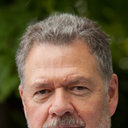Nocturnal risk of gout attacks.
Parole chiave
Astratto
OBJECTIVE
Several plausible mechanisms and anecdotal descriptions suggest that gout attacks often occur at night, although there are no scientific data supporting this. We undertook this study to evaluate the hypothesis that gout attacks occur more frequently at night.
METHODS
We conducted a case-crossover study to examine the risk of acute gout attacks in relation to the time of the day. Gout patients were prospectively recruited and followed up via the internet for 1 year. Participants were asked about the following information concerning their gout attacks: the date and hour of attack onset, symptoms and signs, medication use, and purported risk factors during the 24- and 48-hour periods prior to the gout attack. We calculated the odds ratios (ORs) of gout attacks (with 95% confidence intervals [95% CIs]) according to three 8-hour time blocks of the day (i.e., 12:00 AM to 7:59 AM, 8:00 AM to 3:59 PM [reference], and 4:00 PM to 11:59 PM) using conditional logistic regression.
RESULTS
Our study included 724 gout patients who experienced a total of 1,433 attacks (733, 310, and 390 attacks during the first, second, and third 8-hour time blocks, respectively) over 1 year. The risk of gout flares in the 8-hour overnight time block (12:00 AM to 7:59 AM) was 2.36 times higher than in the daytime (8:00 AM to 3:59 PM) (OR 2.36 [95% CI 2.05-2.73]). The corresponding OR in the evening (4:00 PM to 11:59 PM) was 1.26 (95% CI 1.07-1.48). These associations persisted among those with no alcohol use and in the lowest quintile of purine intake in the 24 hours prior to attack onset. Furthermore, these associations persisted in subgroups according to sex, age group, obesity status, diuretic use, and use of allopurinol, colchicine, and nonsteroidal antiinflammatory drugs.
CONCLUSIONS
These findings provide the first prospective evidence that the risk of gout attacks during the night and early morning is 2.4 times higher than in the daytime. Further, these data support the purported mechanisms and historical descriptions of the nocturnal onset of gout attacks and may have implications for antigout prophylactic measures.


